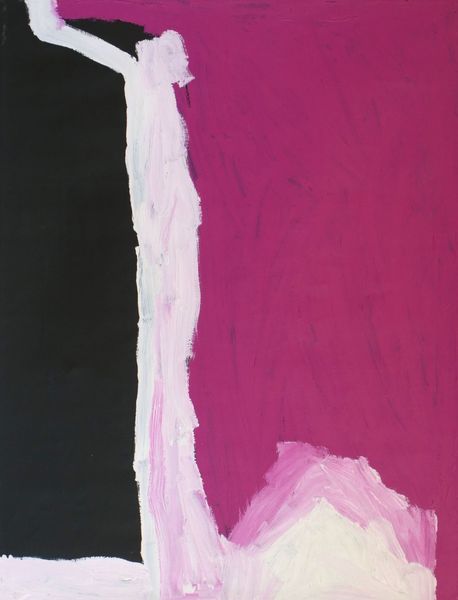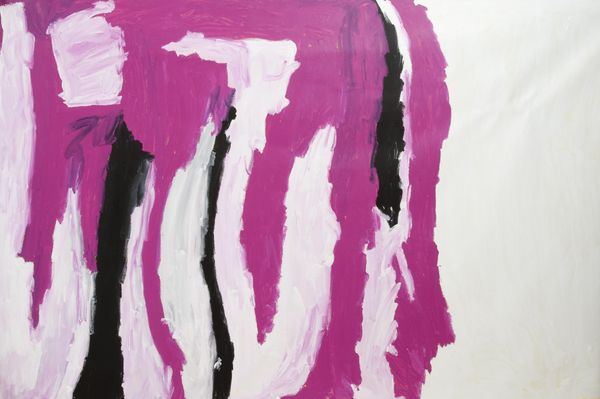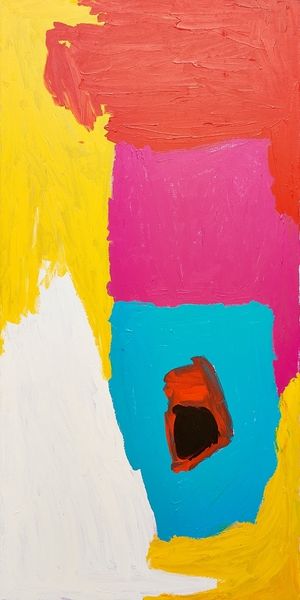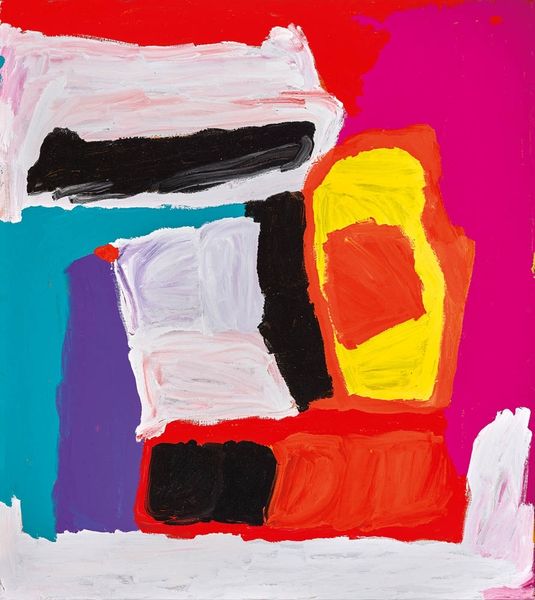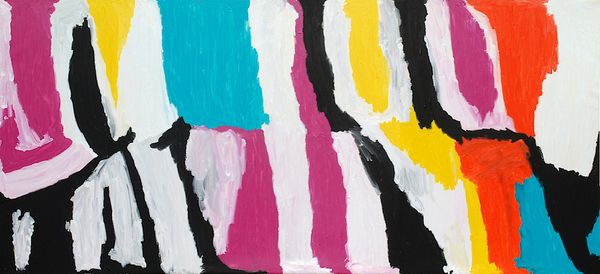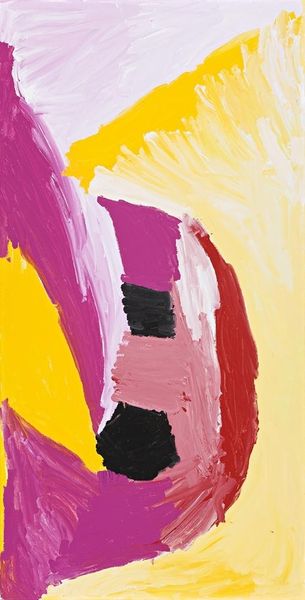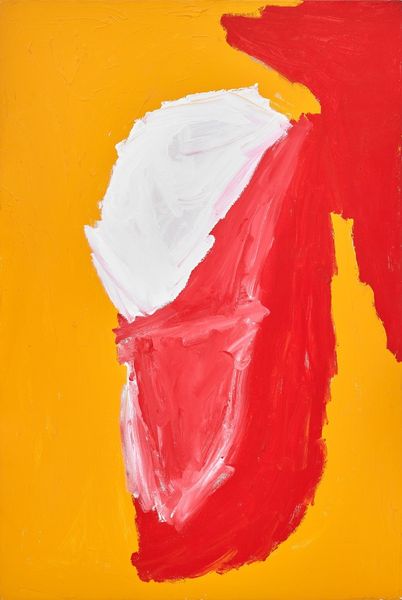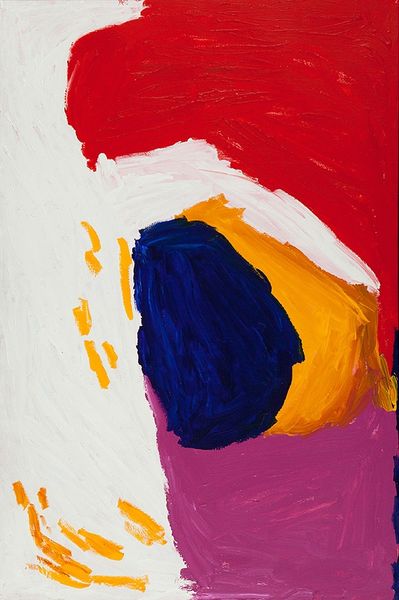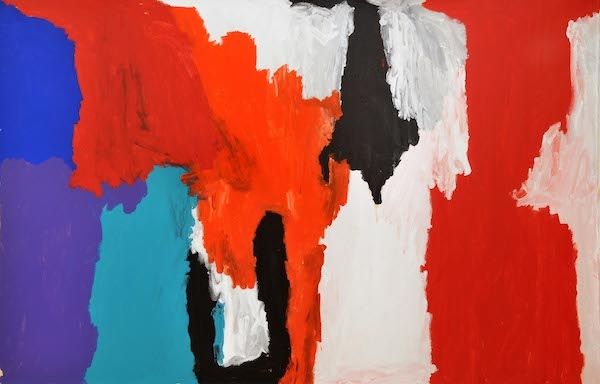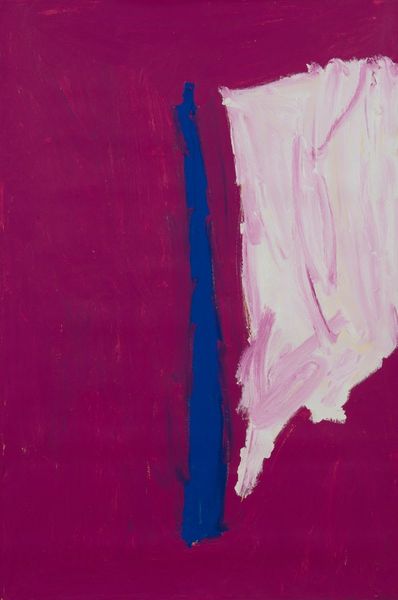
Copyright: Sally Gabori,Fair Use
Curator: Sally Gabori's "My Grandfather's Country / Dingkarri" created in 2007. Gabori, an Indigenous Australian artist, renders the landscape in blocks of acrylic paint on canvas. Editor: My first thought? Bold! I mean, look at the scale and that vivid magenta! It grabs you, doesn’t it? It feels really raw, like you can feel the artist’s hand. Curator: Indeed. Gabori was already in her eighties when she started painting, and it shows in the immediacy of her approach. It echoes ancestral connections and deeply personal memories linked to her homeland, Bentinck Island. Notice the Dingkarri, it’s not just a place; it embodies history, spirituality, identity. Editor: The thickness of the paint intrigues me. You can see the layering, the buildup, it creates this tactile quality. I am interested in understanding more about what types of acrylics were accessible to Gabori, what was involved in producing that canvas in the conditions she had available. Curator: I can see that. The materials give it texture, depth, creating something haptic. But beyond materiality, the juxtaposition of colours is striking: magenta, blue, yellow, red...each possibly holds coded meanings tied to specific sites, stories, kinship systems associated with Gabori's cultural memory. Editor: Cultural memory translated into the very process, I think. The urgency of her brushstrokes suggest she knew that these places of memories needed to be preserved on the canvas quickly before those faded completely away, and before their associated traditional practices are forever gone, lost from history. Curator: Precisely! In a way, Gabori was translating her Dingkarri, her cultural homeland, onto the canvas, in hopes it remains forever protected. Her abstraction contains deep figural truths, which require the viewer to spend time connecting to this history and feeling its emotional truth. Editor: Thinking about production conditions changes how I view this work. What initially seemed like an exercise in bold expression, an older Indigenous artist from very afar, using the types of inexpensive supplies she had available at the time turns into something truly precious: memories shaped through the manipulation of available means. Curator: So true! We are faced with more than just the colours or textures; the piece contains stories and tangible records passed down over time and are presented to viewers seeking insight. Editor: Now, having dived in, I perceive more than color: labour, place, memory all embedded within, which reshapes my original impression, urging a wider material and cultural assessment. Curator: I agree, now its layers start revealing how profoundly images continue to convey emotions, history, cultural legacies.
Comments
No comments
Be the first to comment and join the conversation on the ultimate creative platform.
